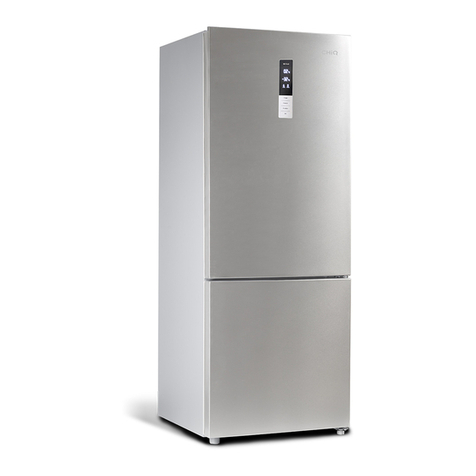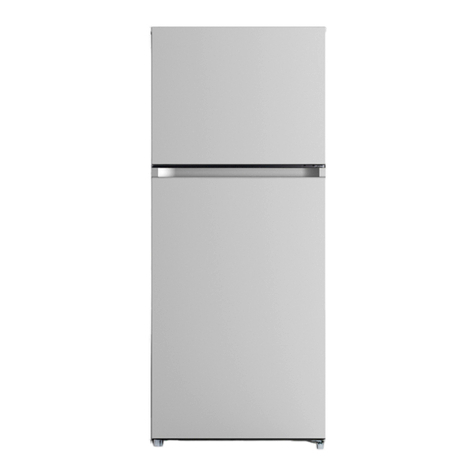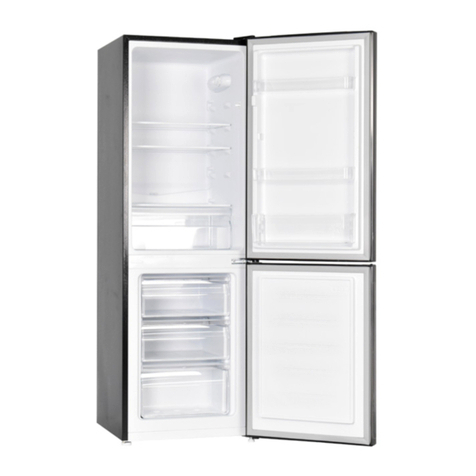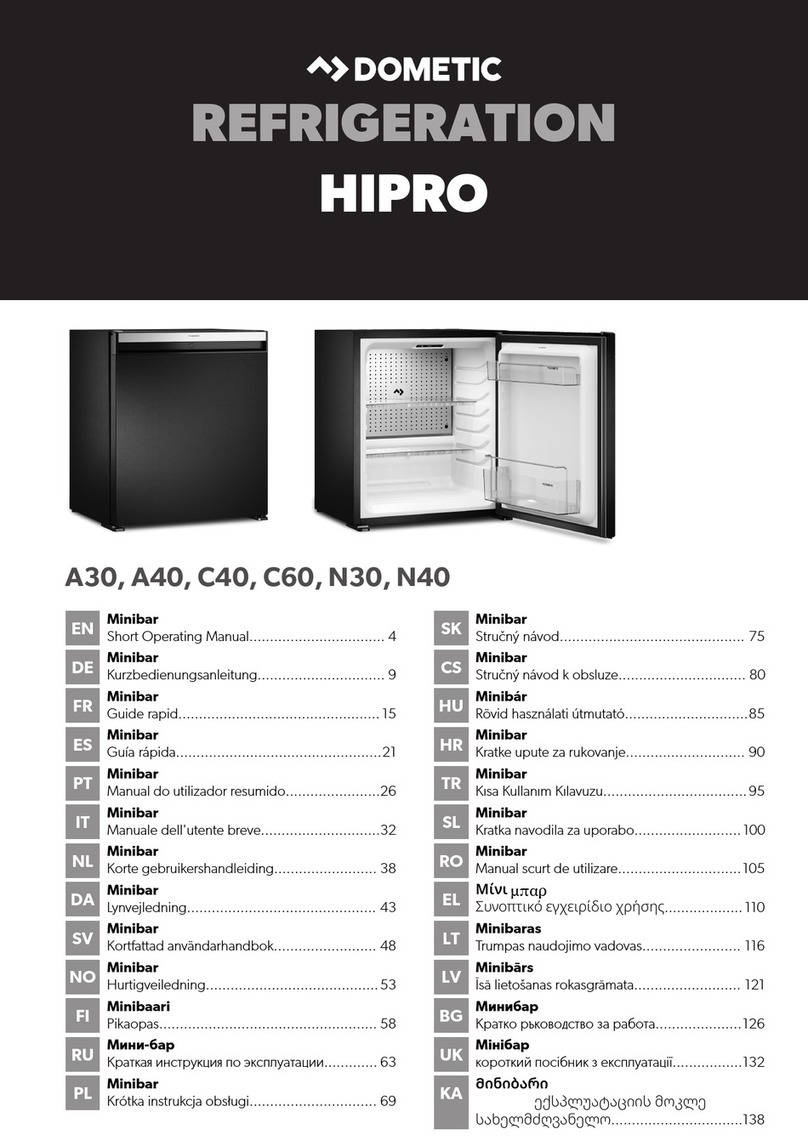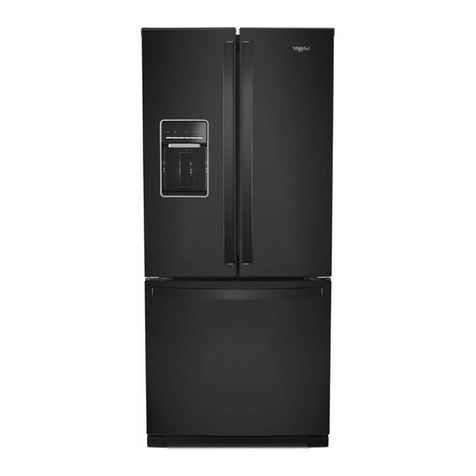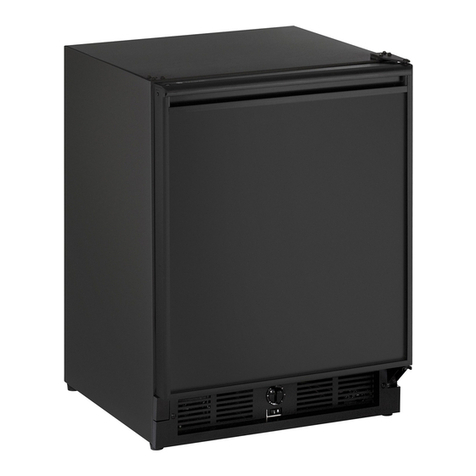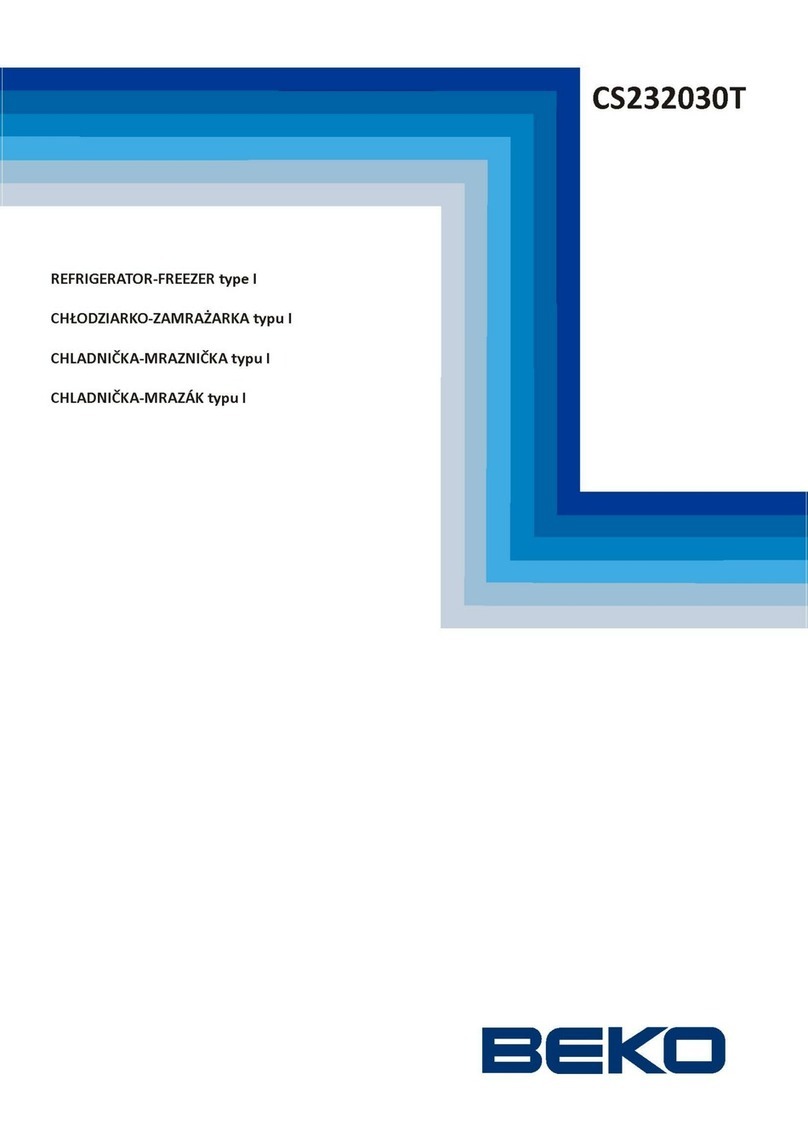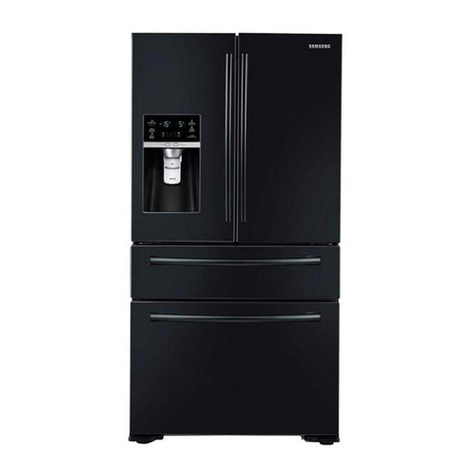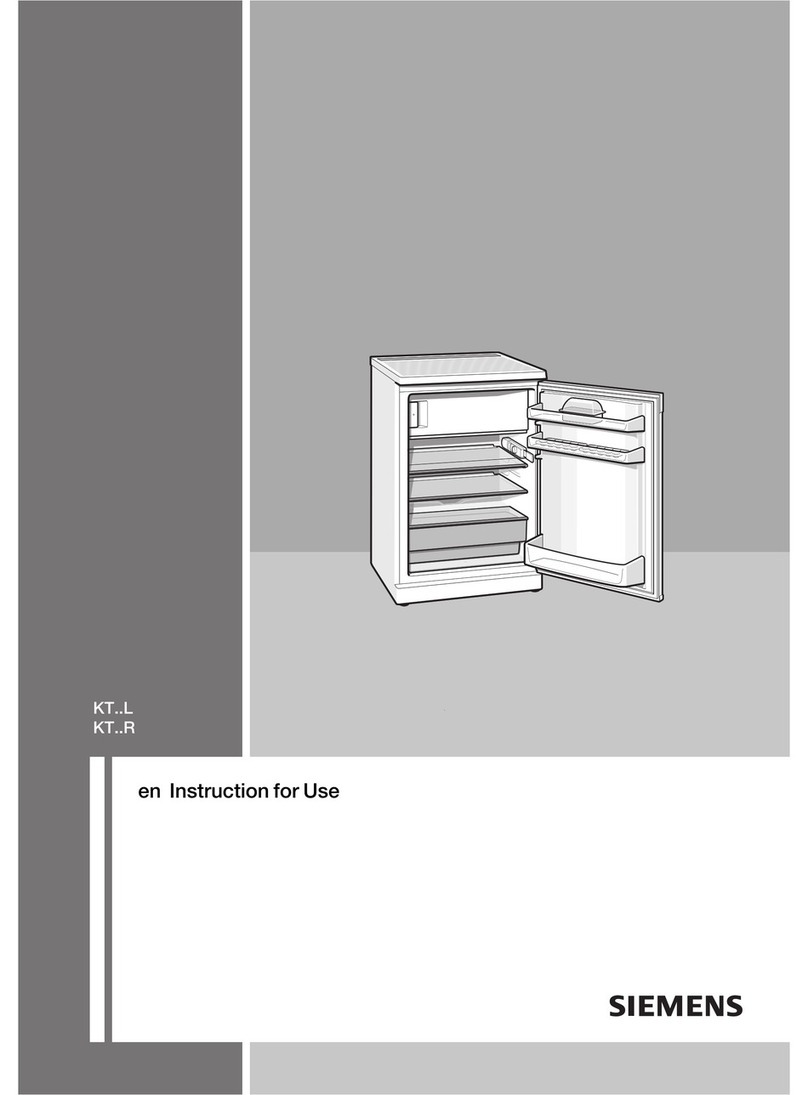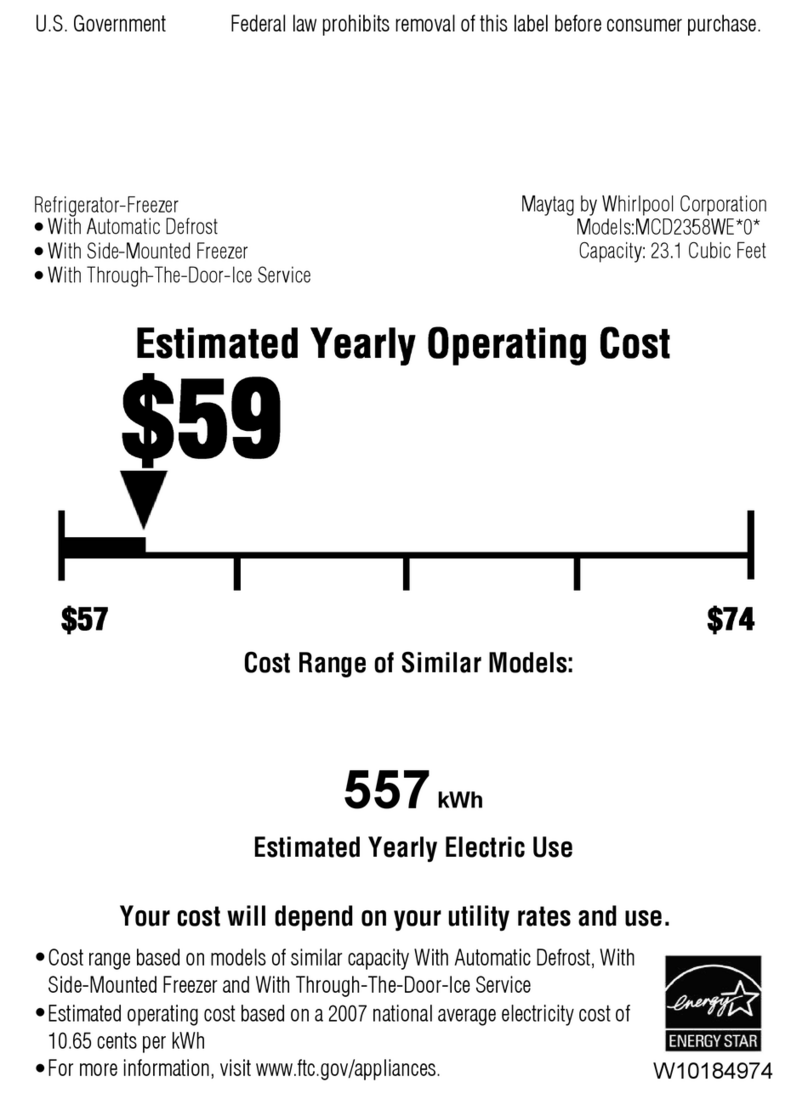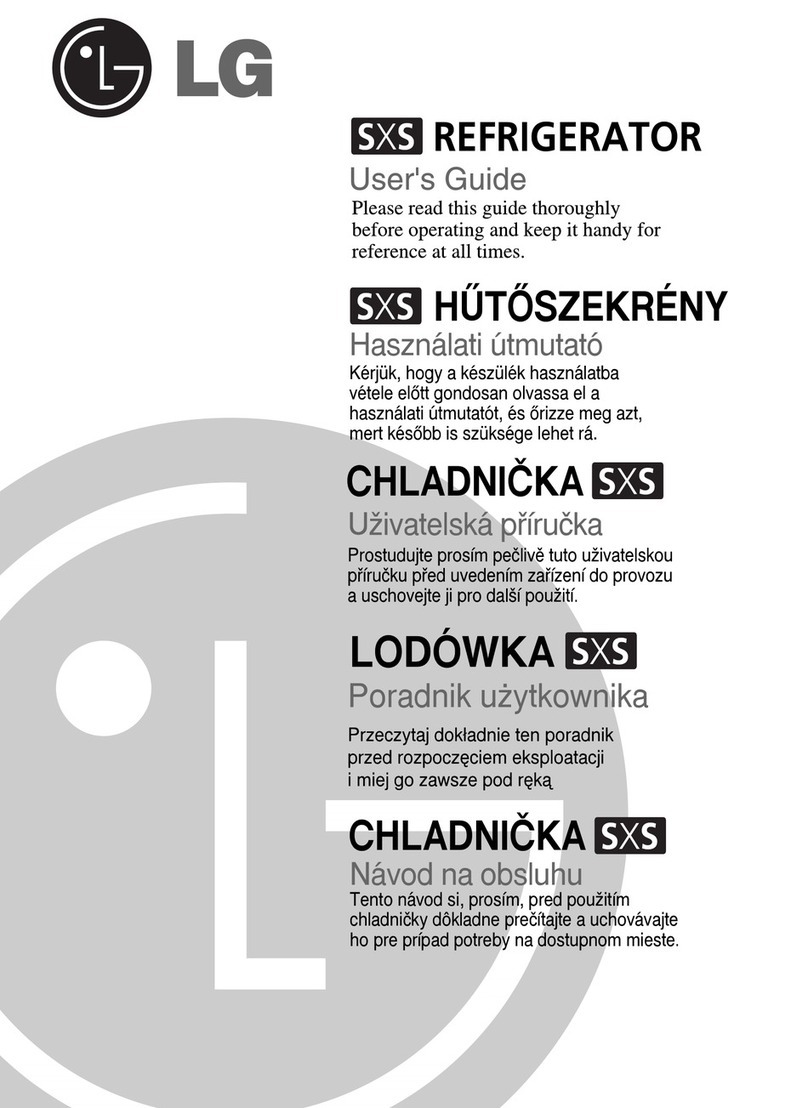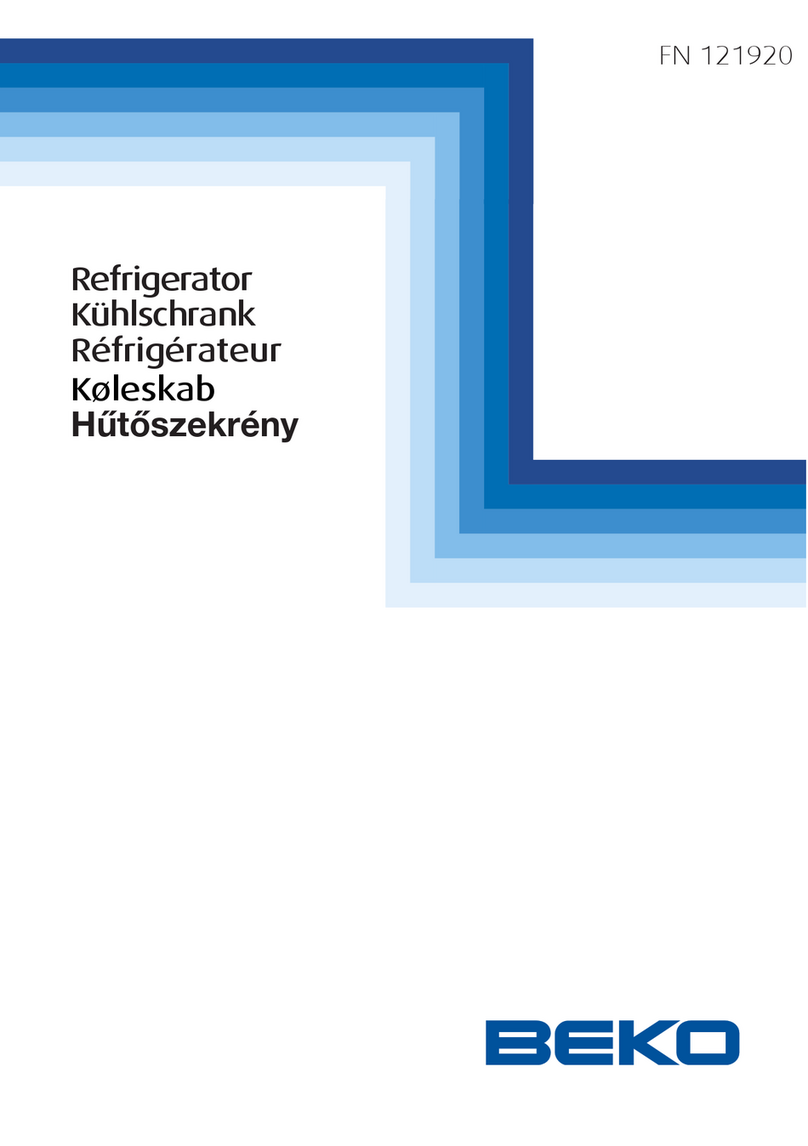ChiQ CPS570F User manual

技术要求: 版本号 物料编码/图
号
A01.....
1. 尺寸:32K;
2. 印刷颜色:封面105g铜版纸彩印,内容黑白色;
3. 材质:内容80g双胶纸
4. 样板需送设计部门封样
5. 制件必须满足《GF-07冰箱说明书、铭牌、能效
标识设计规范(E版)其它类似印刷件》技术规范
标记 变更内容 修改日期 签名
①
②
③
④
⑤
编制 王成年 审核 熊克念
批准 谢萍 时间


EN
2
Contents
I. SAFETY INSTRUCTIONS .................................................................................................................. 3
II. Product Features ................................................................................................................................. 5
III. Preparations for use ............................................................................................................................ 6
IV. Functions ............................................................................................................................................. 7
V. Instructions for food storage ............................................................................................................... 9
VI. Tips for special needs ....................................................................................................................... 10
VII. Maintenance and cleaning ................................................................................................................. 11
VIII. Simple fault analysis and elimination (varying with different products) ............................................ 12
IX. Certifications (to be provided by Certification Engineer) .................................................................. 12
X. Safe recovery instructions ................................................................................................................. 12
Dear users, this manual contains the product’s basic
knowledge, how to use it, fault diagnosis and basic
troubleshooting methods. In order to better understand and
use this product, please take good care of this manual and
read it carefully.

EN
3
I. SAFETY INSTRUCTIONS
WARNING!
It is hazardous for anyone other than authorized service personnel to carry out servicing or repairs which involves the
removal of covers. To avoid the risk of an electric shock, do not attempt to repair this appliance yourself.
WARNING!
Risk of fire / flammable materials.
Safety tips
Do not use electrical appliances such as a hair dryer or heater to defrost your Freezer.
Containers with flammable gases or liquids can leak at low temperatures.
Do not store any containers with flammable materials, such as spray cans, fire extinguisher refill cartridges etc. in the
Freezer.
Do not place carbonated or fizzy drinks in the Freezer compartment. Ice lollies can cause “Frost/Freeze burns”. If
consumed straight from the Freezer.
Do not remove items from the Freezer compartment if your hands are damp/wet, as this could cause skin abrasions or
“Frost/Freezer burns”. Bottles and cans must not be placed in the Freezer compartment as they can burst when the
contents freeze.
Manufacturer’s recommended storage times should be adhered to. Refer to relevant instructions.
Do not allow children to tamper with the controls or play with the appliance. The appliance is heavy. Care should be
taken when moving it. It is dangerous to alter the specification or attempt to modify this product in any way.
Do not store inflammable gases or liquids inside your Freezer.
If the power cable is damaged, it must be replaced by the manufacturer, its service agent or similarly qualified persons in
order to avoid a hazard.
This appliance can be used by children aged from 8 years and above and persons with reduced physical, sensory or
mental capabilities or lack of experience and knowledge if they have been given supervision or instruction concerning use
of the appliance in a safe way and understand the hazards involved. Children shall not play with the appliance. Cleaning
and user maintenance shall not be made by children without supervision.
This appliance is intended to be used in household and similar applications such as
·staff kitchen areas in shops, offices and other working environments;
·farm houses and by clients in hotels, motels and other residential type environments;
·bed and breakfast type environments;
·catering and similar non-retail applications.
Keep ventilation openings, in the appliance enclosure or in the built-in structure, clear of obstruction.
Do not use mechanical devices or other means to accelerate the defrosting process, other than those recommended by
the manufacturer.
Do not damage the refrigerant circuit.

EN
4
Do not use electrical appliances inside the food storage compartments of the appliance, unless they are of type
recommended by the manufacturer.
Do not store explosive substances such as aerosol cans with a flammable propellant inthis appliance.
This appliance is not intended for use by persons (including children) with reduced physical, sensory or mental
capabilities, or lack of experience and knowledge, unless they have been given supervision or instruction concerning use
of the appliance by a person responsible for their safety.Children should be supervised to ensure that they do not play with
the appliance.
– WARNING: Keep ventilation openings, in the appliance enclosure or in the built-in structure, clear of obstruction.
– WARNING: Do not use mechanical devices or other means to accelerate the defrosting process, other than those
recommended by the manufacturer.
– WARNING: Do not damage the refrigerant circuit.
– WARNING: Do not use electrical appliances inside the food storage compartments of the appliance, unless they are of
the type recommended by the manufacturer.
– WARNING: Refrigerating appliances – in particular a refrigerator-freezer Type I – might not operateconsistently
(possibility of defrosting of contents or temperature becoming too warm in the frozen foodcompartment) when sited for an
extended period of time below the cold end of the range of temperaturesfor which the refrigerating appliance is designed;
– WARNING:It is necessary that, for doors or lids fitted with locks and keys, the keys be kept out of the reach ofchildren
and not in the vicinity of the refrigerating appliance, in order to prevent children from beinglocked inside.
– WARNING: The refrigerant used in your appliance and insulation materials requires special disposal procedures.
– WARNING: When positioning the appliance, ensure the supply cord is not trapped ordamaged.
– WARNING: Do not locate multiple portable socket-outlets orportable power supplies at therear of the appliance
Children aged from 3 to 8 years are allowed to load and unload refrigerating appliances.
To avoid contamination of food, please respect the following instructions:
–Opening the door for long periods can cause a significant increase of the temperature in the compartments of
theappliance.
–Clean regularly surfaces that can come in contact with food and accessible drainage systems.
–Clean water tanks if they have not been used for 48 h; flush the water system connected to a watersupply if water has
not been drawn for 5 days.
–Store raw meat and fish in suitable containers in the refrigerator, so that it is not in contact with or drip onto other food.
–Two-star frozen-food compartments are suitable for storing pre-frozen food, storing or making ice-cream and making ice
cubes.
–One-, two- and three-star compartments are not suitable for the freezing of fresh food.
–If the refrigerating appliance is left empty for long periods, switch off, defrost, clean, dry, and leavethe door open to
prevent mould developing within the appliance.
Electrical Connection
WARNING
This appliance should be properly grounded for your safety. The power cord of this appliance is equipped with a
three-prong plug which mates with the standard three prong wall outlets to minimize the possibility of electrical shock.
Do not, under any circumstances, cut or remove the third ground prong from the power cord supplied.
This refrigerator appliance requires a standard 220-240VAC 50/60Hzelectrical outlet with three-prong ground.
This refrigerator appliance is not designed to be used with an inverter.
The cord should be secured behind the appliance and not left exposed or dangling to prevent accidental injury.
Never unplug the refrigerator by pulling the power cord. Always grip the plug firmly and pull straight out from the
receptacle.
Do not use an extension cord with this appliance. If the power cord is too short, have a qualified electrician or service
technician install an outlet near the appliance. Use of an extension cord can negatively affect the performance of the unit.
Improper use of the grounded plug can result in the risk of electrical shock. If the power cord is damaged, have it
replaced by an authorized service center.
Climate Range
The information about the climate range of the appliance is provided on the rated plate. It indicates at which ambient
temperature (that is, the room temperature in which the appliance is working) the operation of the appliance is optimal
(proper).
Climate range
Permissible ambient temperature
SN from +10°C to +32°C
N from +16°C to +32°C
ST from +16°C to +38°C
T from +16°C to +43°C
Note:Given the limit values of the ambient temperature range for the climate classes for which the refrigerating appliance
is designed and the fact that the internal temperatures could be affected by such factors as location of the refrigerating
appliance, ambient temperature and the frequency of door opening, the setting of any temperature control device might
have to be varied to allow for these factors, if appropriate.

EN
5
Locks
If your Refrigerator is fitted with a lock, keep the key out of reach and not in the vicinity of the appliance to prevent children
being entrapped. When disposing of an old Refrigerator, break off any old locks or latches as a safeguard.
Freon-free
The freon-free refrigerant (R600a) and the foaming insulation material (cyclopentane) that is environmentally friendly are
used for the refrigerator, causing no damage to the ozone layer and having very small impact on the global warming.
R600a is flammable, and sealed in a refrigeration system, without leakage during normal use. But, in case of refrigerant
leakage due to the refrigerant circuit being damaged, be sure to keep the appliance away from open flames and open the
windows for ventilation as quickly as possible.
II. Product Features
This is a side-by-side inverter fridge-freezer adopting the electronic control mode. Its upper part is the fridge compartment
for fresh food storage, such as fruits, vegetables, eggs, milk, cooked foods, etc.; and its lower part is the freezer
compartment where fish, meat, etc. can be frozen for the long-term storage.
★Computer control
Adopting the electronic temperature control, the fridge-freezer is designed with a LED display screen, by which the
temperature of each compartment and the working parameters can be managed and set.
★Inverter technology
Integrated with precise frequency conversion, noise reduction, energy saving, precise temperature control and other
technologies, the fridge-freezer boasts of superior performances. Furthermore, working efficiency of the inverter
compressor can be automatically adjusted according to the ambient temperature and the set temperature, so as to keep
the fridge-freezer operating in its optimal state.
★LECO
The fridge-freezer is internally configured with the LECO device for the net flavor and fresh-keeping purpose, with the
preservation time of fruits and vegetables effectively extended.
★Green technology
The freon-free refrigerant and foaming insulation material are used for the fridge-freezer, causing no damage to the ozone
layer and having a very small impact on the global warming, so it is the environmentally friendly product.
★Stylish appearance
Adopting the optimized man-machine engineering design, the side-by-side refrigerator has an elegant and novel
appearance, and is easy to be opened.
★More user-friendly designs
Such functions as wide working voltage range, automatic temperature control, power-off memory, power-on delay,
automatic alarm, fast freezing, and fridge power-off, etc. are available.

EN
6
Explosive views
ote: Due to technological innovation, the product descriptions in this manual may not be completely consistent
with your refrigerator. Details are in accordance with the real product.
III. Preparations for use
Installation location:
1. Ventilation condition
The position you select for the refrigerator installation should be well-ventilated and has less hot air. Do not locate the
refrigerator near a heat source such as cooker, and avoid it from direct sunlight, thus guaranteeing the refrigeration effect
while saving energy consumption. Do not locate the refrigerator in the damp place, so as to prevent the refrigerator from
rusting and leaking electricity.The result of the total space of the room in which the refrigerator is installed being divided by
the refrigerant charge amount of the refrigerator shall not be less than 8 g/ M3.
Note: The amount of refrigerant charged for the refrigerator can be found on the nameplate.
2. Heat dissipation space
When working, the refrigerator gives off heat to surroundings. Therefore, at least 300mm of free space should be spared
at the top side, more than 100mm on both sides, and above 50mm at the back side of the refrigerator.
Dimensions in mm:
W D H A B C(°)
E
F
912 704 1770 1524 1062 160 50 100
Note:Note:Figure 1, Figure 2 only illustrate the space demand of the product.

EN
7
3. Level ground
Place the refrigerator on the solid and flat ground (floor) to keep it stable, or else, it will give rise to vibration and noise.
When the refrigerator is placed on such flooring materials as carpet, straw mat, polyvinyl chloride, the solid backing plates
should be applied underneath the refrigerator, so as to prevent color change due to heat dissipation.
Unobstructed ventilation shall be maintained around the appliance or in an embedded structure.
Preparations for use
1. Standing time
After the refrigerator is properly installed and well cleaned, do not switch it on immediately. Make sure to energize the
refrigerator after more than 1 hour of standing, so as to ensure its normal operation.
2. Cleaning
Confirm the accessory parts inside the refrigerator and wipe the inside with a soft cloth.
3. Power-on
Insert the plug into the solid socket to start the compressor. After 1 hour, open the freezer door, if the temperature inside
the freezer compartment drops obviously, it indicates the refrigeration system is working normally.
4. Storage of food
After the refrigerator runs for a period of time, the internal temperature of the refrigerator will be automatically controlled
according to the user’s temperature setting. After the refrigerator is fully cooled, put in foods, which usually need 2~3
hours to be fully cooled. In summer, when the temperature is high, it takes more than 4 hours for the foods to be fully
cooled (Try to open the refrigerator door as less as possible before the internal temperature cools down).
If the refrigerator is installed in the moisture place, make sure to check whether the ground wire and leakage
circuit breaker are normal. If vibration noises are produced due to the refrigerator contacting the wall or if the wall
gets blackened by air convection around the compressor, move the refrigerator away from the wall. Setting up
the refrigerator may cause jamming noise or image chaos to the mobile phone, fixed-line telephone, radio
receiver, television set surrounding it, so try to keep the refrigerator as far away as possible in such case.
IV. Functions
The display panel is designed on the fridge door, illustrated as the figures below:
Function Setting
When the refrigerator system is connected to power supply for the first time, all icons on the display panel gets illuminated
for 2s, and the system runs in the Smart mode by default. When all the doors are close, the display gets extinguished
automatically if no key operation within 3 minutes. When the display is off, it will light up if any door is opened or any key is
pressed.
The following key operations are valid only when the keys are unlocked and gets illuminated on the display.

EN
8
1.Functions
1.1 Temp. setting
1)Fridge temperature setting
Press the Temp. Zone key to select the fridge zone until the corresponding icon gets flickering, and then press the
Temp. key to set the temperature as desired, finally, press the OK key or wait for 5s to validate the setting.
The fridge temperature setting cycles as following:
5→6→7→8→OF→2→3→4→5
OF indicates the fridge is switched off, and when the OF function takes effect, the fridge will stop cooling.
Be sure to take all foods out of the fridge compartment before setting this function.
2)Freezer temperature setting
Press the Temp. Zone key to select the freezer zone until the corresponding icon gets flickering, and then press the
Temp. key to set the temperature as desire, finally press the OKkey or wait for 5s to validate the setting.
The freezer temperature setting cycles as following:
-18→-17→-16→-24→-23→-22→-21→-20→-19→-18
1.2Fast Freeze
1)When the Fast Freeze function is enabled, the freezer temperature will be controlled at -32℃ automatically, and after
26 hours of running, the Fast Freeze function gets exited. Cooling down the freezer temperature in a rapid manner is
beneficial to the prevention of food nutrition against lost and the preservation of freshness.
Under the Fast-Freezing mode, the freezer temperature is subjected to no adjustment.
2) Enabling the Fast-Freezing function
Press the Function key to select Fast Freeze until the corresponding icon gets flickering, and then press the OKkey
within 5s for confirmation. If the OKkey is not pressed within 5s, the setting will be invalidated.
3) Exiting the Fast-Freezing function
After a cumulative running period of 26 hours, the Fast Freeze function will exit automatically.
Under the Fast Freeze mode, press the Function key to select Fast Freeze until the corresponding icon gets
flickering, and then press the OK key for confirmation, the Fast Freeze function will get exited.
When the Smart function is enabled, the Fast-Freezing function will be disabled automatically.
1.3Smart
1)When the Smart function is enabled, the temperature of the fresh food compartment is controlled at 4℃, and that of the
freezer compartment at- 18℃, so that foods can be stored in the best condition while the refrigerator is running more
efficiently and with better performance.
Under the Smart mode, the fresh food compartment temperature and the freezer compartment temperature
are subject to no change.
2)Enabling the Smart function
Press the Function key to select Smart until the corresponding icon gets flickering, and then press the OK key within
5s for confirmation. If the OK is not pressed within 5s, the setting will be invalidated.
3)Exiting the Smart function
Under the Smart mode, press the Function key to select Smart until the corresponding gets flickering, and then press
the OK key for confirmation. The Smart function will get exited.
When the Fast Freeze function is enabled, the Smart function will be disabled automatically.
1.4Child Lock(For the product of the PCM plate door only)
When the Child Lock function is enabled, the temperature and function are subjected to no change to prevent
maloperation.
1) In case of no key operation within 3 minutes, the Child Lock function will be enabled automatically.
2) Exiting the Child Lock function manually
Press and hold down the Unlock for 3s, then the Child Lock function can be disabled.
(Note: The Child Lock function is not available with the product of the glass panel door.)
1.5 Door open alarm
If any door is open for more than 3 minutes, buzzer alarms will be continuously issued, which can be stopped when any
key is pressed, but will be restored after 3 minutes if the door keeps open. The alarms will not be lifted until the door is
closed.
1.6 Power cut memory
In the case of power failure, the refrigerator will maintain the running state that is set before the power outage when the
power supply is restored.

EN
9
1.7 Power-on delay
In order to protect the refrigerator compressor from being damaged in the case of short-time power failure (i.e., less
than 5 minutes), the compressor will not be started immediately after it is powered on.
1.8 Over-temperature alarm (only after power outage)
When the refrigerator system is powered on, if the freezer sensor temperature is higher than -10℃, digits of the freezer
zone get flickering on the display. The freezer temperature can be displayed when any key is pressed, and the normal
display will be restored when any key is pressed again or after 10s.
1.9 Fault alarm
In case E0, E1, E2, EH, or EC is displayed on the operation panel, it indicates fault with the refrigerator. Please contact
the aftersales person for visiting service in such case.
V. Instructions for food storage
Precautions for use
The appliance might not operate consistently (there is possibility of defrosting or temperature becoming too warm in
the frozen food compartment) when sited for an extended period of time below the cold limit of the temperature
range for which the refrigerating appliance is designed
The information of climate type of the appliance is provided on the rating plate.
The internal temperature could be affected by such factors as the location of refrigerating appliance, ambient
temperature, and frequency of door open, etc., and if appropriate, a warning that setting of any temperature control
device might have to be varied to allow for these factors should be made.
Effervescent drinks should not be stored in the freezer compartment or the low-temperature compartment, and some
products such as water ices should not be consumed too cold.
Food storage location
Due to the cold air circulation in the refrigerator, the temperature of each area in the refrigerator is different, so different
kinds of food should be placed in different areas.
The fresh food compartment is suitable for the storage of such foods as need not to be frozen, the cooked food, beer,
eggs, some condiments that need cold preservation, milk, fruit juice, etc. The crisper box is suitable for the preservation of
vegetables, fruits, etc.
The freezer compartment is suitable for the storage of ice cream, frozen food and the foods to be preserved for a long
time.
Use of the fresh food compartment
Set the temperature of the fresh food storage compartment between 2 ℃ ~ 8 ℃, and store the foods that are intended
for short-term storage, or to be eaten at any time in the fresh food compartment.
Fridge shelf: When removing the shelf, lift it up first, and then pull it out; and when installing the shelf, place it into position
before putting it down. Keep the shelf rear flange upward, to prevent foods from contact the liner wall. When taking out or
putting in the shelf, hold it firmly, and handle with care to avoid damage.
Crisper box: Pull out the crisper box for access to food. After using or cleaning the cover plate of the crisper box, be sure
to put it back onto the crisper, so that the internal temperature of the crisper box will not be affected.
Use of the crisper humidity regulating rod
The humidity regulating rod of the crisper box is design to maintain the humidity and freshness of the vegetablesstored
inside.
When the humidity regulating rod is slide to the right, with more holes exposed, lower humidity will be kept inside the
crisper box.
When the humidity regulating rod is slide to the left, with less holes exposed, higher humidity will be kept inside the crisper
box.
Cautions for food storage
You’d better clean the foods and wipe them dry before storing them inside the refrigerator. Before foods are put in the
refrigerator, it is advisable to seal them up, so as to prevent water evaporation to keep fresh fruits and vegetables on one
hand, and prevent taint of odor on the other hand.
Do not put too many or too weight foods inside the refrigerator. Keepenough space between foods; if too close, the cold
air flow will be blocked, thus affecting the refrigeration effect. Do not store excessive or overweight foods, to avoid the
shelf from being crushed. When storing the foods, keep a distance away from the inner wall; and do not place the
water-rich foods too close to the fridge rear wall, lest they get frozen on the inner wall.
Categorized storage of foods:Foods should be stored by category, with the foods you eat every day placed in front of the
shelf, so that the door open duration can be shortened and food spoilage due to expiration can be avoid.
Energy-saving tips: Allow the hot food cool down to the room temperature before putting it in the refrigerator. Put the
frozen food in the fresh food compartment to thaw, using the low temperature of the frozen food to cool the fresh food,
thus saving energy.
Storage of fruits and vegetables
In the case of refrigerating appliances with chill compartment, a statement to the effect that some types of fresh
vegetables and fruits are sensitive to cold and therefore are not suitable for storage in this kind of compartment should be
made.

EN
10
Use of the frozen food storage compartment
The freezer temperature is controlled below -18 ℃, and it is advisable to store the food for long-term preservation in the
freezer compartment, but the storage duration indicated on the food packaging should be adhered to.
The freezer drawers are used to store food that needs to be frozen. Fish and meat of large block size should be cut into
small pieces and packed into fresh-keeping bags before they are evenly distributed inside the freezer drawers.
Fast freezing
(1) Refer to the description about fast freezing function in the “Function” section.
(2) Compared with the normal freezing, fast freezing enables food to pass through the maximum ice crystal formation
zone at the fastest speed. Fast freezing can freeze the food water content into fine ice crystals, without damaging the
cell membrane, so cell juice will not be lost when thawing, and the original freshness and nutrition of food can be
maintained.
(3) The fast-freezing function is designed to preserve nutrition of the frozen food, with the food thoroughly frozen in the
shortest time. Fast freezing consumes more energy than the normal freezing does.
★ Allow the hot foods to cool down to the room temperature before putting them in the freezer compartment.
★Do not put a glass container with liquid or the canned liquid that is sealed in the freezer compartment, so as to avoid
burst due to volume expansion after the liquid gets frozen up.
★Divide the food into appropriately small portions
★You’d better pack the food up before freezing it, and the packing bag used should be dry, in case the packing bags are
frozen together. Foods should be packed or covered by such suitable materials as are firm, tasteless, impervious to air
and water, non-toxic and pollution-free, to avoid cross-contamination and transfer of odor.
Tips for Water dispenser
The refrigerator includes a water dispenser which makes it easier to fill your cup of water and have access to cold water
almost immediately. The water dispenser includes one tank of 5.5 litres of water which has to be filled out. To use water
dispenser, follow the instructions below:
1. Open the refrigerator door to ensure the water dispenser fixed well.
2. Open the filler cover of the water tank, slowly fill the water tank to prevent any spills until the tank is filled. Then close
the filler cover of the water tank. See image C.
3. Once the water tank is full, set the thermostat at the lowest mode or the Fast Cool mode, and one hour later you can
dispense water for drinking. See image D.
4. When using the water dispenser, some water may drip and accumulate at the bottom of the water dispenser. Please
wipe it with a cloth when necessary.
5. The maximum fill must be lower than the tank coveras indicated by the maximum fill line
NOTE:Don't take away the cup until no waterdrop.
VI. Tips for special needs
Moving the refrigerator/freezer
•Location
Do not place your refrigerator/freezer near a heat source, e.g. cooker, boiler or radiator. Avoid it from direct sunlight in
out-buildings or sun lounges.
•Leveling
Make sure to level your refrigerator/freezer using the front leveling feet. If not level, the refrigerator/freezer door gasket
sealing performance will be affected, or even it may lead to the operating failure of your refrigerator/freezer.
After locating the refrigerator/freezer in position, wait for 4 hours before using it, so as to allow the refrigerant to settle.
•Installation
Do not cover or block the vents or grilles of your appliance.
When you are out for a long time
•If the appliance will not be used for several months, turn it off first, and then unplug the plug from the wall outlet.
•Take out all foods.
•Clean and dry the interior thoroughly. To prevent odor and mold growth, leave the door ajar: block it open or have the
door removed if necessary.
•Keep the cleaned appliance in a dry, ventilated place and away from the heat source, place the appliance smoothly, and
do not place heavy objects on top of it.
•The unit should not be accessible to child’s play.

EN
11
VII. Maintenance and cleaning
Before cleaning, unplug the power plug first; Do not plug in or plug out the plug with wet hand, because
there is a risk of electric shock and injury. Do not spill water directly on the refrigerator, to avoid rust, electricity
leakage and accidents. Do not stretch your hands into the bottom of the refrigerator, since you might be
scratched by sharp metal corners.
Internal cleaning and external cleaning
The food residuals in the refrigerator are liable to produce bad odor, so the refrigerator must be cleaned regularly. The
fresh food compartment is usually cleaned once a month.
Remove all shelves, crisper box, bottle racks, cover board, and drawers etc., and clean them with a soft towel or sponge
dipped in warm water or neutral detergent.
Clear off the dusts accumulated on the rear panel and side plates of the refrigerator often.
After using detergent, be sure to rinse it with clean water, and then wipe it dry.
Do not use bristle brush, steel wire brush, detergent, soap powder, alkaline detergent, benzene, gasoline,
acid, hot water and other corrosive or soluble items to cleanse the cabinet surface, door gasket, plastic
decorative parts, etc., so as to avoid damage.
Carefully wipe dry the door gasket, clean the groove using a wooden chopstick wrapped with cotton string. After the
cleaning, fix the four corners of the door gasket first, and then embed it segment by segment into the door groove.
Interruption of power supply or failure of the refrigerating system
•Take care of the frozen foods in the event of an extended non-running of the refrigerating appliance (such as interruption
of power supply or failure of the refrigerating system).
•Try to open the refrigerator door as less as possible, in this way can food safely and freshly kept for hours even in hot
summer.
•If you get the power outage notice in advance:
1) Adjust the thermostat knob to the high mode an hour in advance, so that foods get fully frozen (Do not store new
food during this time!). Restore the temperature mode to the original setting when power supply becomes normal in a
timely manner.
2) You can also make ice with a watertight container, and put it in the upper part of the freezer, so as to extend the time
for fresh food to be stored.
Note: Once the refrigerator is used, you’d better use it continuously; and under normal circumstance, do not
stop its use, so as not to affect the service life.
Defrosting
This appliance is designed with automatic defrosting function, thus no need to defrost it manually.
Changing the lamp
The LED lamp is used by the refrigerator for lighting, which features low energy consumption and long service life. In case
of any abnormality, please contact the after-sales personnel for visiting service.The lamps can only be replaced by the
manufacturer,together with a part of the appliance.
Safety-check after maintenance
Is the power cord broken or damaged?
Is the power plug firmly inserted into the socket?
Is the power plug abnormally overheat?
Note: Electric shock and fire accident may be caused in case the power cord and plug is damaged or stained
by dust. If any abnormality, please unplug the power plug and get in contact with the vendor.
How to disassemble the parts.
Fridge door bottle rack:
Hold the bottle rack with both hands, and then push it up.
Fridge shelf:
Hold one end of the shelf, and lift it up while pulling it outwards.

EN
12
VIII. Simple fault analysis and elimination
With regard to the following small faults, not every failure needs to be fixed by the technical service personnel; you can try
to solve the problem.
Case
Inspection
Solutions
• Completely
non-
refrigeration
•Is power plug off?
•Are breakers and fuses broken?
•No electricity or line trip?
•Re-plug
•Opening the door and checking whether the lamp is
lit.
• Abnormal noise
•Is refrigerator stable?
•Does refrigerator contact the wall?
•Adjusting refrigerator's leveling feet.
•Off the wall.
• Poor
refrigerating
efficiency
•Do you put hot food or too much
food?
•Do you open the door frequently?
•Do you clip food bag to the door
gasket?
•Direct sunlight or near a furnace or
stove?
•Is it well-ventilated?
•Temperature setting in too high?
•Putting food into refrigerator when hot food becomes
cool.
•Checking and closing the door.
•Removing the refrigerator from the heat source.
•Emptying the distance to maintain good ventilation.。
•Setting at the appropriate temperature.
• Peculiar smell in
refrigerator
•Any spoiled food?
•Do you need to clean refrigerator?
•Have you packed food of strong
flavors?
•Throwing away spoiled food.
•Cleaning refrigerator.
•Packing food of strong flavors.
• No key
response
•Check whether the Child Lock
function is enabled on the display
panel.
•Press & hold the "Unlock" key for 3 seconds to unlock
the key, and then conduct the key operation. (For
details, refer to the Child Key function.)
• Temperature
setting
impossible
•Check whether the Smart or Fast
Freeze function is enabled on the
display panel.
•Exit the special function mode, and then set up the
temperature (for details refer to the Functions section)
• Freezer
temperature
displayed on the
panel, with the
temperature
digits flashing
•Is power cut before?
•Press any key to lift the alarm (refer to the
Overtemperature alarm function), and then check the
foods inside the fridge and freezer compartments get
spoiled.
( Note: If the above descriptions are inapplicable to troubleshooting, do not disassemble and repair it yourself.
Repairs carried out by inexperienced persons may cause injury or serious malfunctioning. Contact the local store where
your purchase was made. This product should be serviced by an authorized engineer and only genuine spare parts
should be used.
When the appliance is not in use for long periods, disconnect from the electricity supply, empty all foods and clean the
appliance, leaving the door ajar to prevent unpleasant smells.
IX. Certifications
Electrical information
This electrical appliance must be grounded
This product is equipped with a plug, which is suitable for all houses equipped with sockets meeting the current
specifications
If the fitted plug is not suitable for your socket outlets, it should be cut off and carefully disposed of. To avoid a possible
shock hazard, do not insert the discarded plug into a socket.
This product complies the EEC directives.
X. Safe recovery instructions
Disposal
Old appliances still have some surplus value. An environmentally friendly approach will ensure that valuable raw materials
are recycled.
The refrigerants used in your equipment and insulation materials require special handling procedures. Make sure there is
no pipe damage on the back of the equipment before handling.
Up-to-date information on the options for disposing of old equipment and packaging from old equipment can be obtained
from the local municipal office.
Correct disposal of the product

EN
13
This marking indicates that this product should not be disposed with other household wastes
throughout the EU. To prevent possible harm to the environment or human health from uncontrolled
waste disposal, recycle it responsibly to promote the sustainable reuse of material resources. To
return your used device, please use the return and collection systems or contact the retailer where
the product was purchased. They can take this product for environmentally safe recycling.

FR
27
I. INSTRUCTIONS D’UTILISATION
AVERTISSEMENT !
Ilest dangereux pour toute personne autre que le personnel d’entretien autorisé d’effectuer des travaux d’entretien ou
de réparation impliquant le retrait des couvercles. Pour éviter tout risque d'électrocution, n'essayez pas de réparer cet
appareil vous-même.
AVERTISSEMENT !
Risque d’incendie / matériaux inflammables.
Conseils de sécurité
N’utilisez pas d’appareils électriques, tels qu'un sèche-cheveux ou un radiateur pour dégivrer votre congélateur.
Lesrécipients contenant des gaz ou des liquides inflammables peuvent fuir aux basses températures.
N’entreposez pas des récipients avec des matériaux inflammables, tels que des bombes aérosol, des cartouches de
recharge d'extincteur, etc. dans le congélateur.
Neplacez pas des boissons gazeuses ou pétillantes dans le compartiment du congélateur. Les sucettes glacées
peuvent provoquer des « brûlures de gel / gerçures » si elles sont consommées directement après les avoir sorties du
congélateur.
Neretirez pas des articles du congélateur si vos mains sont mouillées / humides, car cela pourrait causer des lésions
cutanées ou des « brûlures de gel / gerçures ». Les bouteilles et les canettes ne doivent pas être placées dans le
compartiment du congélateur car elles peuvent éclater lorsque le contenu gèle.
Lesdurées de stockage recommandées par le fabricant doivent être respectées. Reportez-vous aux instructions
correspondantes.
Nelaissez pas les enfants modifier les boutons de contrôle ou jouer avec le congélateur. L’appareil est lourd. Des pré
cautions doivent être prises lors de son déplacement. Il est dangereux de modifier les spécifications ou d’essayer de
modifier ce produit de quelque manière que ce soit.
N’entreposez pas de gaz ou de liquides inflammables à l'intérieur de votre congélateur.
Sile câble d'alimentation est endommagé, il doit être remplacé par le fabricant, son représentant ou une personne
qualifiée afin d'éviter tout risque de danger.
Cetappareil peut être utilisé par des enfants âgés de 8 ans et plus et des personnes ayant des capacités physiques,
sensorielles ou mentales réduites ou qui manquent d'expérience et de connaissances si elles ont reçu une surveillance ou
des instructions concernant l'utilisation de l'appareil de manière sûre et les dangers impliqués. Les enfants ne doivent pas
jouer avec cet appareil. Le nettoyage et l’entretien par l'utilisateur ne doivent pas être effectués par des enfants sans
surveillance.
Cetappareil est conçu pour une utilisation domestique et pour des usages similaires comme :
- Dans les cuisines de personnel des boutiques, des bureaux et autres lieux de travail ;
- Dans les habitations des fermes et par les clients des hôtels, des motels et d’autres environnements de type ré
sidentiel ;
- Dans les environnements de type chambres d'hôtes ;

FR
28
- Pour la restauration et applications similaires non commerciales.
Gardezles ouvertures de ventilation dans le boîtier de l'appareil ou dans la structure intégrée dégagées de toute
obstruction.
N’utilisez pas de dispositifs mécaniques ou d'autres moyens pour accélérer le processus de dégivrage, autres que
ceux recommandés par le fabricant.
N’endommagez pas le circuit frigorifique.
N'utilisez pas d'appareils électriques dans les compartiments de stockage d’aliments de l'appareil, à moins qu'ils ne
soient du type recommandé par le fabricant.
Nestockez pas de substances explosives telles que des bombes aérosol avec un agent propulseur inflammable dans
cet appareil.
Cetappareil peut être utilisé par des enfants âgés de 8 ans et plus et des personnes ayant des capacités physiques,
sensorielles ou mentales réduites ou qui manquent d'expérience et de connaissances si elles ont reçu une surveillance ou
des instructions concernant l'utilisation de l'appareil de manière sûre et les dangers impliqués.
- AVERTISSEMENT : Gardez les ouvertures de ventilation dans le boîtier de l'appareil ou dans la structure intégrée
dégagées de toute obstruction.
- AVERTISSEMENT : N’utilisez pas de dispositifs mécaniques ou d'autres moyens pour accélérer le processus de
dégivrage, autres que ceux recommandés par le fabricant.
- AVERTISSEMENT : N’endommagez pas le circuit frigorifique.
- AVERTISSEMENT : N'utilisez pas d'appareils électriques dans les compartiments de stockage d’aliments de l'appareil, à
moins qu'ils ne soient du type recommandé par le fabricant.
- AVERTISSEMENT : Les appareils réfrigérants - en particulier un réfrigérateur-congélateur de type I - peuvent ne pas
fonctionner correctement (risque de dégivrage ou de réchauffement excessif du compartiment pour aliments surgelés)
lorsqu'ils sont installés pendant une période prolongée au-dessous de la limite froide de la plage de températures pour
laquelle les appareils de réfrigération sont conçus ;
Il est nécessaire que, pour les portes ou les couvercles munis de serrures et de clés, les clés soient tenues hors de la
portée des enfants et non à proximité de l'appareil de réfrigération, afin d'éviter que les enfants ne s’enferment à
l'intérieur.
- AVERTISSEMENT : Le réfrigérant utilisé dans votre appareil et les matériaux isolants doivent faire l'objet d' une
procédure d'élimination spéciale.
- AVERTISSEMENT : Lors du positionnement de l'appareil, assurez-vous que le câble d'alimentation n'est pas coincé ni
endommagé.
- AVERTISSEMENT : Ne placez pas plusieurs prises de courant portables ou blocs d'alimentation portables à l'arrière de
l'appareil.
Les enfants âgés de 3 à 8 ans sont autorisés à charger et décharger des appareils de réfrigération.
Pour éviter toute contamination des aliments, veuillez respecter les instructions suivantes :
- L’ouverture de la porte pendant de longues périodes peut entraîner une augmentation significative de la température
– Nettoyez régulièrement les surfaces pouvant entrer en contact avec des aliments et des systèmes de drainage
accessibles.
- Nettoyez les réservoirs d’eau s’ils n’ont pas été utilisés pendant 48 heures ; rincez le système d'eau connecté à une
approvisionnement en eau si l'eau n’a pas circulé pendant 5 jours.
- Conservez la viande et le poisson crus dans des récipients appropriés au réfrigérateur, de sorte qu’ils ne soient pas en
contact
- Les compartiments pour produits congelés deux étoiles sont adaptés à la conservation des aliments pré-congelés, au
stockage ou à la fabrication
- Les compartiments à une, deux et trois étoiles ne conviennent pas pour la congélation d'aliments frais.
- Si l’appareil de réfrigération est laissé vide pendant de longues périodes, éteignez, décongelez, nettoyez, séchez et
laissez la porte ouverte pour empêcher la formation de moisissure dans l'appareil.
Connexion électrique
AVERTISSEMENT
Cet appareil doit être correctement mis à la terre pour votre sécurité. Le câble d'alimentation de cet appareil est équipé
d'une fiche à trois broches qui s'adapte aux prises murales standard à trois broches afin de minimiser les risques de
choc électrique.
En aucun cas, ne coupez ou ne retirez la troisième broche de terre du câble d’alimentation fourni.
Cet appareil de réfrigérateur nécessite une prise électrique de la terre à trois broches.de tension standard de 220-240 V
CA 50/60Hzelectrical.
Cet appareil frigorifique n'est pas conçu pour être utilisé avec un onduleur.
Le câble doit être sécurisé derrière l'appareil et ne doit pas être exposé ni être suspendu pour éviter les blessures
accidentelles.
Ne débranchez jamais le réfrigérateur en tirant sur le câble d'alimentation. Tenez toujours fermement la fiche et

FR
29
sortez-la du réceptacle.
N'utilisez pas de rallonge avec cet appareil. Si le câble d'alimentation est trop court, demandez à un électricien qualifié
ou à un technicien de service d'installer une prise près de l'appareil. L'utilisation d'une rallonge peut nuire aux
performances de l'appareil.
Une utilisation incorrecte de la fiche mise à la terre peut entraîner un risque de choc électrique. Si le câble
d'alimentation est endommagé, faites-le remplacer par un centre d’entretien autorisé.
Classe climatique
Les informations sur la plage de température de l'appareil sont fournies sur la plaque signalétique. Cela indique à quelle
température ambiante (c'est-à-dire la température ambiante dans laquelle l'appareil fonctionne), le fonctionnement de
l'appareil est optimal (correct).
Classe
climatique
Température ambiante admissible
SN de +10°C à +32°C
N de +16°C à +32°C
ST de +16°C à +38°C
T de +16°C à +43°C
Remarque : Etant donné que les valeurs limites de la plage de température ambiante pour les classes climatiques pour
lesquelles l'appareil de réfrigération est conçu et le fait que les températures internes pourraient être affectées par des
facteurs tels que l'emplacement de l'appareil de réfrigération, la température ambiante et la fréquence d’ouverture de la
porte, le réglage de tout dispositif de contrôle de la température peut devoir être modifié pour tenir compte de ces facteurs,
le cas échéant.
Serrures
Si votre réfrigérateur est équipé d'une serrure, rangez la clé hors de portée des enfants et non à proximité de l'appareil
pour empêcher qu’ils ne risquent de s’enfermer à l’intérieur. Lors de la mise au rebut d'un vieux réfrigérateur, cassez les
vieilles serrures ou les loquets par mesure de sécurité.
Sans fréon
Le réfrigérant sans fréon (R600a) et le matériau isolant moussant (cyclopentane) respectueux de l'environnement sont
utilisés pour le réfrigérateur, afin de ne pas endommager la couche d'ozone du fait de l’impact très faible sur le
réchauffement planétaire. R 600a est inflammable et scellé dans un système de réfrigération, sans fuite lors d'une
utilisation normale. Cependant, en cas de fuite de liquide réfrigérant due à un endommagement du circuit frigorifique,
veillez à éloigner l'appareil des flammes nues et à ouvrir les fenêtres pour assurer une ventilation le plus rapidement
possible.
II. Fonctions du produit
Ceci est un réfrigérateur-congélateur à inverseur adoptant la conception à portes multiples. Sa partie supérieure est le
compartiment du réfrigérateur pour le stockage des aliments frais, tels que les fruits, les légumes, les œufs, le lait, les
aliments cuits, etc. et sa partie inférieure est le compartiment du congélateur où le poisson, la viande, etc. peuvent être
congelés pour le stockage à long terme.
★ Contrôle de l'ordinateur
Adoptant le mode de contrôle électronique de la température, le réfrigérateur-congélateur est conçu avec un écran LED,
grâce auquel la température de chaque compartiment et les paramètres de fonctionnement peuvent être gérés et réglés.
★Technologie d’inverseur
Intégré avec une conversion de fréquence précise, une réduction du bruit, un système économique en énergie, un
contrôle précis de la température et d'autres technologies, le réfrigérateur-congélateur affiche des performances
supérieures. De plus, l'efficacité de fonctionnement du compresseur à inverseur peut être ajustée automatiquement en
fonction de la température ambiante et de la température définie, de manière à maintenir le réfrigérateur / congélateur en
état de fonctionnement optimal.
★LECO
Le réfrigérateur-congélateur est configuré en interne avec le dispositif LECO pour la saveur nette et la conservation
fraîche, avec une durée de conservation prolongée des fruits et des légumes.
★Technologie verte
Le réfrigérant sans fréon (R600a) et le matériau isolant moussant (cyclopentane) respectueux de l'environnement sont
utilisés pour le réfrigérateur, afin de ne pas endommager la couche d'ozone du fait de l’impact très faible sur le
réchauffement planétaire.
★Apparence élégante
Adoptant la conception technique optimisée homme-machine, le réfrigérateur côte-à-côte à quatre portes a une
apparence élégante et nouvelle et est facile à ouvrir.
★Designs plus conviviaux
Des fonctions telles qu'une large plage de tension de fonctionnement, un contrôle automatique de la température, une

FR
30
mémoire de mise hors tension, un délai de mise sous tension, une alarme automatique, une congélation rapide et une
mise hors tension du réfrigérateur, etc. sont disponibles.
Vue explosée et liste des pièces
Remarque : En raison d'innovations technologiques, les descriptions du produit dans ce manuel peuvent ne
pas être totalement compatibles avec votre réfrigérateur. Les détails sont conformes à l'article.
III. Préparations avant l’utilisation
Emplacement d’installation
7. Condition de ventilation
Le lieu choisi pour l'installation du réfrigérateur doit être bien ventilé et ne pas être sujet à de l'air chaud. Ne placez pas
le réfrigérateur à proximité d'une source de chaleur, telle qu'une cuisinière ou une chaudière, et évitez de l'exposer
directement au soleil, pour garantir ainsi un effet de réfrigération tout en réduisant la consommation d'énergie. Ne placez
pas le réfrigérateur dans un endroit humide, de manière à éviter la rouille et les fuites d’électricité. Le résultat de la
division de l'espace total de la pièce dans laquelle le réfrigérateur est installé par la quantité de charge de réfrigérant du
réfrigérateur ne doit pas être inférieur à 8 g/ M3.
Remarque : La quantité de réfrigérant chargé pour le réfrigérateur est indiquée sur la plaque signalétique.
8. Espace de dissipation thermique
Lorsqu’il fonctionne, le réfrigérateur dégage de la chaleur dans l’environnement. Par conséquent, vous devez ménager
au moins 300 mm d'espace libre au-dessus du réfrigérateur, plus de 100 mm des deux côtés et 50 mm à l' arrière du
réfrigérateur.
Dimensions en mm
La D H A B C (°)
E
F
912 704 1770 1524 1062 160 50 100
Remarque : Le schéma 1 et le schéma 2 présentent uniquement l’espace requis pour le produit.

FR
31
9. Sol nivelé
Placez le réfrigérateur sur le sol solide et plat (plancher) pour le maintenir stable, sinon des vibrations et du bruit
pourraient en résulter. Lorsque le réfrigérateur est placé sur des matériaux de revêtement de sol tels que moquette,
tapis de paille, chlorure de polyvinyle, les plaques de support pleines doivent être appliquées sous le réfrigérateur, de
manière à éviter tout changement de couleur dû à la dissipation de la chaleur.
Une ventilation non obstruée doit être maintenue autour de l'appareil ou dans la structure encastrée.
Préparations avant l’utilisation
9. Temps d’adaptation
Une fois le réfrigérateur correctement installé et nettoyé, ne le mettez pas immédiatement en marche. Assurez-vous de
mettre le réfrigérateur en marche après plus d’une heure d’adaptation afin d’assurer son fonctionnement normal.
10. Nettoyage
Vérifiez les accessoires dans le réfrigérateur et essuyez-les avec un chiffon doux.
11. Mise en marche
Insérez la fiche dans la prise secteur pour démarrer le compresseur. Après 1 heure, ouvrez la porte du congélateur. Si la
température à l'intérieur du congélateur baisse de manière significative, cela indique que le système de réfrigération
fonctionne normalement.
12. Stockage des aliments
Après que le réfrigérateur ait fonctionné pendant un certain temps, sa température interne sera automatiquement
contrôlée en fonction du réglage de la température que vous avez sélectionné. Une fois le réfrigérateur complètement
refroidi, mettez les aliments pour lesquels il faut généralement 2 à 3 heures pour les refroidir complètement. En été,
lorsque la température est élevée, le refroidissement complet des aliments prend plus de 4 heures (essayez d'ouvrir le
moins possible la porte du réfrigérateur avant que la température interne ne refroidisse).
Si le réfrigérateur est installé dans un lieu humide, assurez-vous que le fil de terre et le disjoncteur de fuite
fonctionnent normalement. Si des bruits de vibration sont générés par le contact du réfrigérateur avec le mur ou
si le mur noircit à cause de la convection autour du compresseur, éloignez le réfrigérateur du mur. L'installation
du réfrigérateur peut causer des brouillages ou des perturbations sur l'image des téléphones portables, des
téléphones fixes, des récepteurs radio, des téléviseurs à proximité ; essayez donc de garder ces appareils aussi
loin que possible du réfrigérateur dans ce cas.
IV. Fonctions
Le panneau d’affichage est placé sur la porte du réfrigérateur, comme illustré à droite.
Réglage des fonctions
Lorsque le réfrigérateur est branché au secteur pour la première fois, toutes les icônes du panneau d'affichage s'allument
pendant 2 secondes et le système fonctionne par défaut en mode Smart. Lorsque toutes les portes sont fermées, l'écran s'
éteint automatiquement si aucune touche n'est actionnée dans les 3 minutes. Lorsque l'écran est éteint, il s'allume si une
porte est ouverte ou si une touche est enfoncée.
Les opérations suivantes ne sont valides que lorsque les touches sont déverrouillées et s’illuminent à l’écran.
1. Fonctions
1.1 Réglage de la température
1) Réglage de la température du réfrigérateur

FR
32
Appuyez sur la touche Temp. Zone pour sélectionner la zone du réfrigérateur, et l’icône correspondante clignotera,
puis appuyez sur la touche Temp. pour ajuster la température, enfin appuyez sur la touche OK / Verrouillage ou
attendez 5 secondes pour valider le réglage de température ci-dessus.
Le cycle de réglage de la température du réfrigérateur est le suivant :
5→6→7→8→OF→2→3→4→5
OF fait référence à l’arrêt du réfrigérateur et lorsque OF prend effet, le réfrigérateur s’arrête de refroidir.
Sortez les aliments hors du compartiment du réfrigérateur avant de régler cette fonction.
2) Réglage de la température du congélateur
Appuyez sur la touche Temp. Zone pour sélectionner la zone du congélateur, et l’icône correspondante clignotera,
puis appuyez sur la touche Temp. pour ajuster la température, enfin appuyez sur la touche OK / Verrouillage ou
attendez 5 secondes pour valider le réglage de température ci-dessus
Le cycle de réglage de la température du congélateur est le suivant :
-18→-17→-16→-24→-23→-22→-21→-20→-19→-18
1.2 Congélation rapide
1) Lorsque la fonction de congélation rapide est activée, la température du congélateur est automatiquement réglée sur
-32 ° C et, après 26 heures de fonctionnement, la fonction de congélation rapide sera désactivée. Le refroidissement
rapide de la température du congélateur est bénéfique pour la prévention de la perte nutritive des aliments et la pré
servation de leur fraîcheur.
En mode de congélation rapide, la température du congélateur ne peut pas être changée.
2) Activer la fonction de congélation rapide
Appuyez sur la touche de fonction pour sélectionner la fonction Congélation rapide jusqu'à ce que l'icône
correspondante clignote, puis appuyez sur la touche OK / Verrouillage dans les 5 secondes pour confirmer. Si vous
n'appuyez pas sur OK dans les 5 secondes, le réglage ne sera pas enregistré.
3) Quitter la fonction de congélation rapide
Après une période de fonctionnement cumulée de 26 heures, la fonction de congélation rapide se désactive
automatiquement.
En mode Congélation rapide, appuyez sur la touche de fonction pour sélectionner la fonction Congélation rapide
jusqu'à ce que l'icône correspondante clignote, puis appuyez sur la touche OK / Verrouillage pour confirmer et la
fonction de congélation rapide sera désactivée.
Lorsque la fonction Smart est activée, la fonction de congélation rapide est automatiquement désactivée.
1.3 Smart
1) Lorsque la fonction Smart est activée, la température du compartiment pour les aliments frais est réglée à 4 ℃, et
celle du congélateur à- 18℃, ℃, de sorte que les aliments puissent être conservés dans les meilleures conditions
tout en permettant au réfrigérateur de fonctionner plus efficacement avec une performance optimale.
En mode Smart, la température du compartiment des aliments frais et celle du congélateur ne peut pas être
changée.
2) Activer la fonction Smart
Appuyez sur la touche de fonction pour sélectionner la fonction Smart jusqu'à ce que l'icône correspondante clignote,
puis appuyez sur la touche OK / Verrouillage dans les 5 secondes pour confirmer. Si vous n'appuyez pas sur OK
dans les 5 secondes, le réglage ne sera pas enregistré.
3) Quitter la fonction Smart
En mode Smart, appuyez sur la touche de fonction pour sélectionner Smart jusqu'à ce que le symbole
correspondant clignote, puis appuyez sur la touche OK / Verrouiller pour confirmer. La fonction Smart sera
désactivée.
Lorsque la fonction Congélation rapide est activée, la fonction Smart est automatiquement désactivée.
1.4 Verrouillage sécurité-enfants (pour le modèle avec porte à plaque PCM uniquement)
Lorsque la fonction de verrouillage sécurité-enfants est activée, la température et la fonction ne peuvent pas être
changées pour empêcher tout dysfonctionnement.
5) Si aucune touche n'est utilisée dans les 3 minutes, la fonction de verrouillage sécurité-enfants sera
automatiquement activée.
6) Activer / quitter manuellement la fonction de verrouillage sécurité-enfants
Appuyez sur la touche OK / Verrouillage pendant 3 secondes et maintenez-la enfoncée pour activer / désactiver
la fonction de verrouillage sécurité-enfants.
(Remarque : La fonction verrouillage sécurité-enfants n’est pas disponible sur le modèle avec la porte vitrée).
1.5 Alarme de porte ouverte
Si une porte est ouverte pendant plus de 3 minutes, une alarme sonore est émise de manière continue. Elle peut être
This manual suits for next models
3
Table of contents
Languages:
Other ChiQ Refrigerator manuals

ChiQ
ChiQ FBM228NE4D User manual
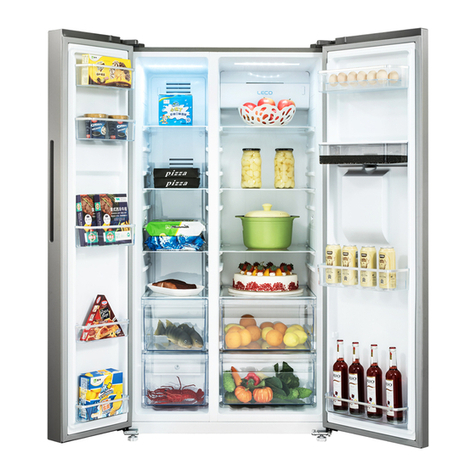
ChiQ
ChiQ FSS559NEI32D User manual
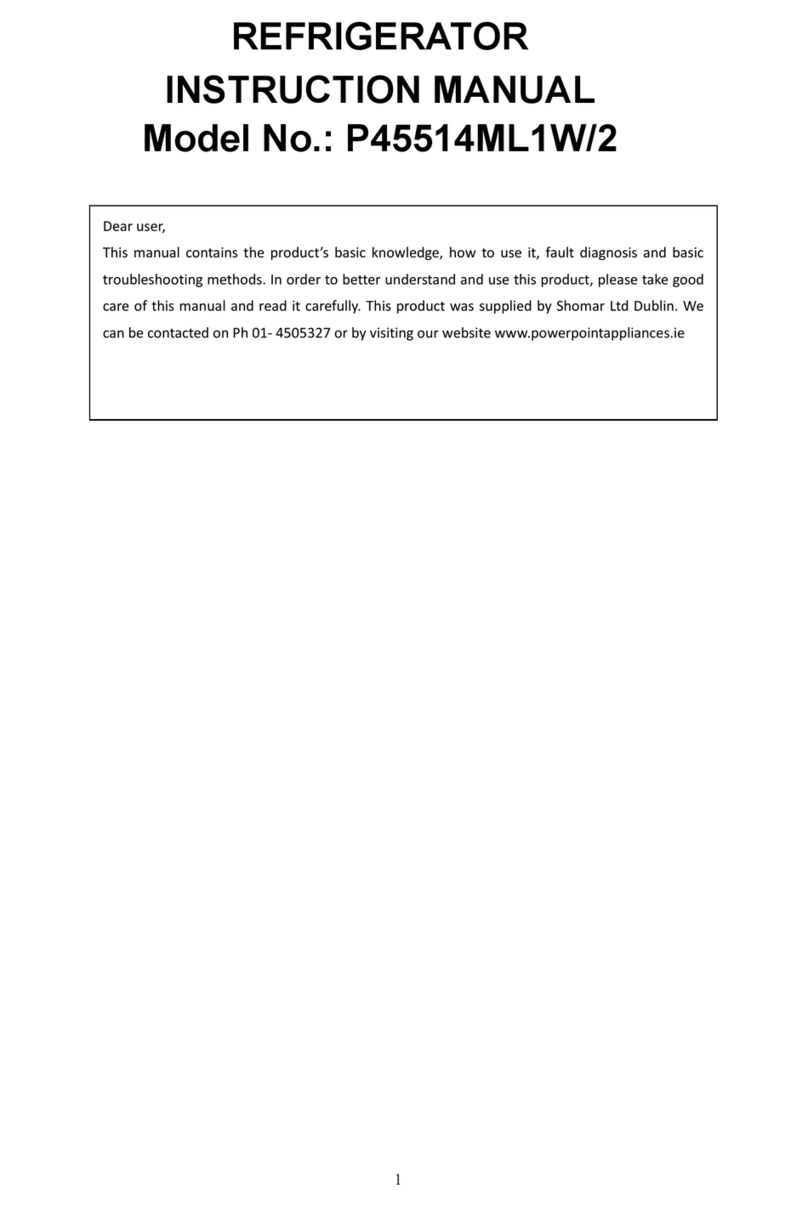
ChiQ
ChiQ P45514ML1W/2 User manual

ChiQ
ChiQ FCD418NE3 User manual

ChiQ
ChiQ CBM251W User manual

ChiQ
ChiQ MRF-467W User manual
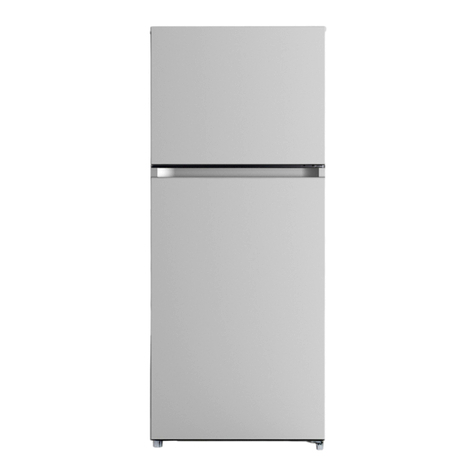
ChiQ
ChiQ CQRT12Y1GD1W User manual

ChiQ
ChiQ CQRB09Y1GD1RW User manual
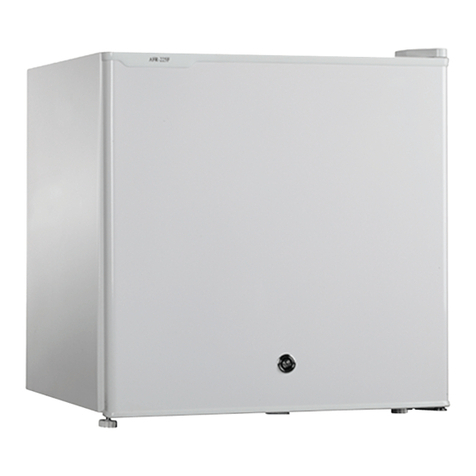
ChiQ
ChiQ CQRD01Z1GD1F User manual

ChiQ
ChiQ FCD418NE4D User manual
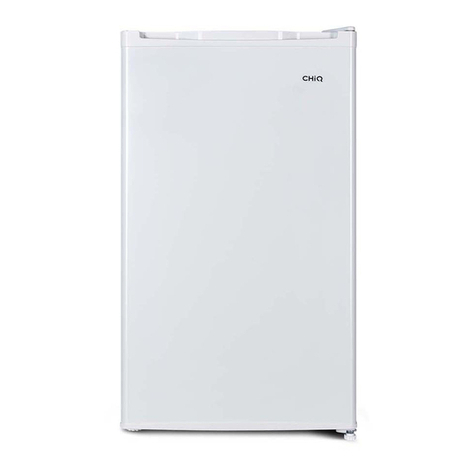
ChiQ
ChiQ CSR090DW User manual
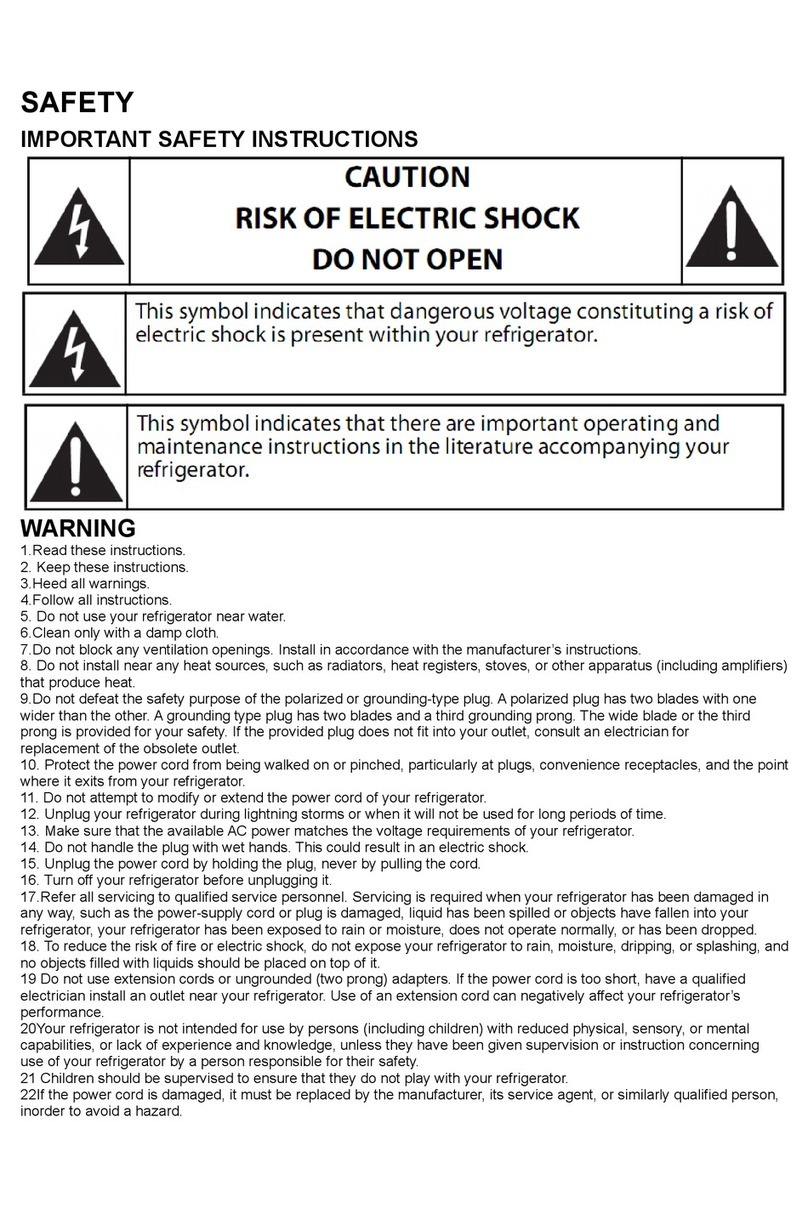
ChiQ
ChiQ CQRD03Z1GD1MR User manual
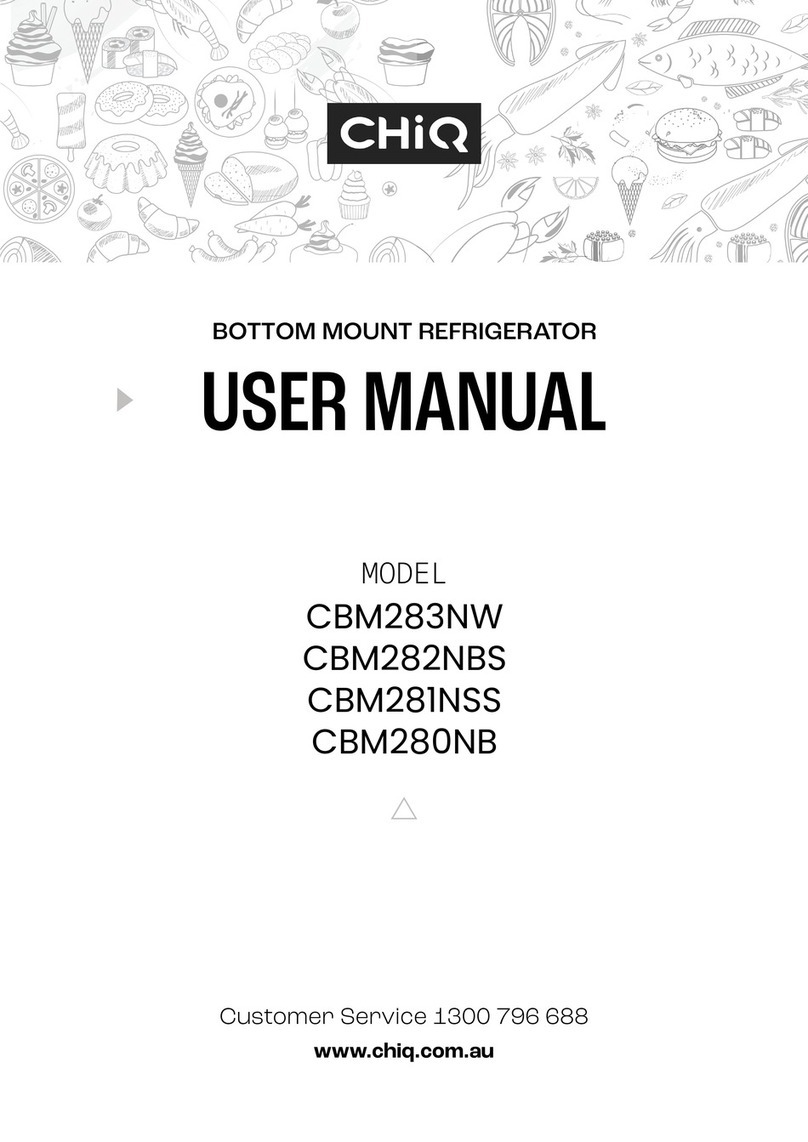
ChiQ
ChiQ CBM283NW User manual
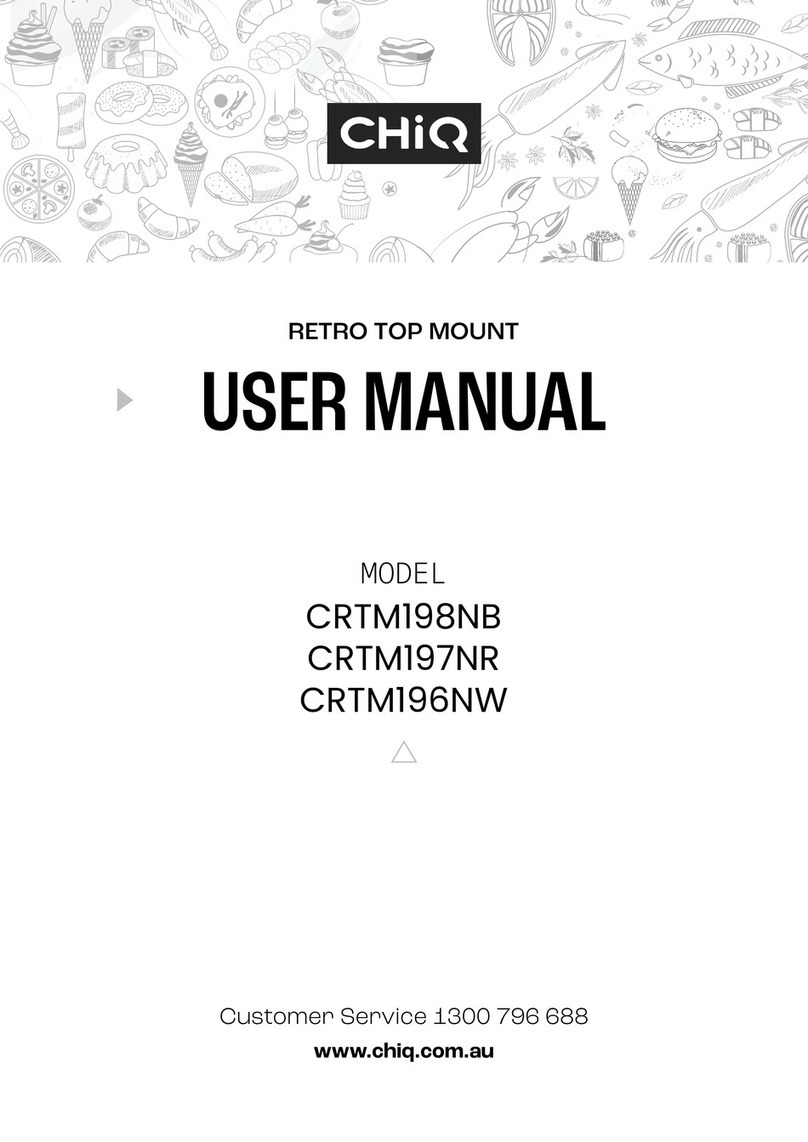
ChiQ
ChiQ CRTM197NR User manual
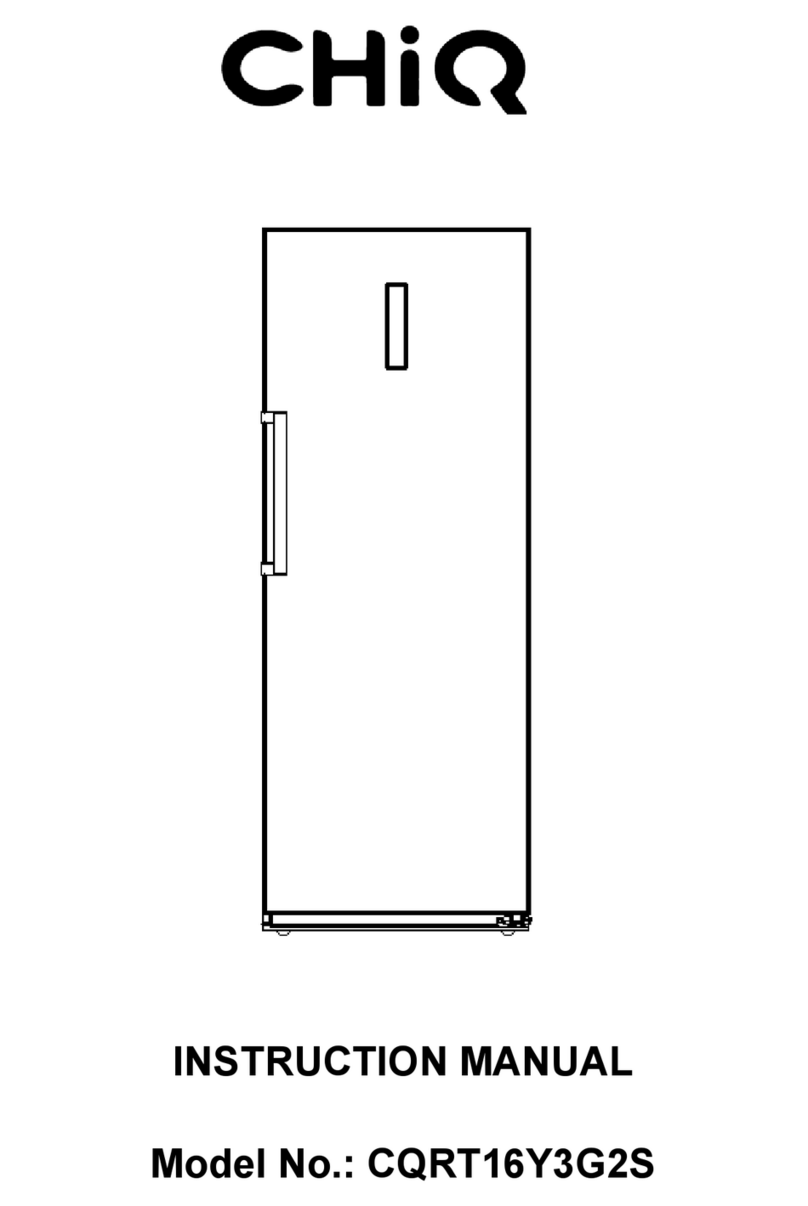
ChiQ
ChiQ CQRT16Y3G2S User manual

ChiQ
ChiQ MRF-252WE User manual
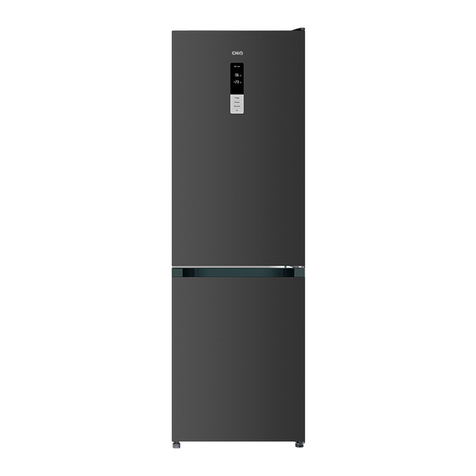
ChiQ
ChiQ FBM317NE4 User manual
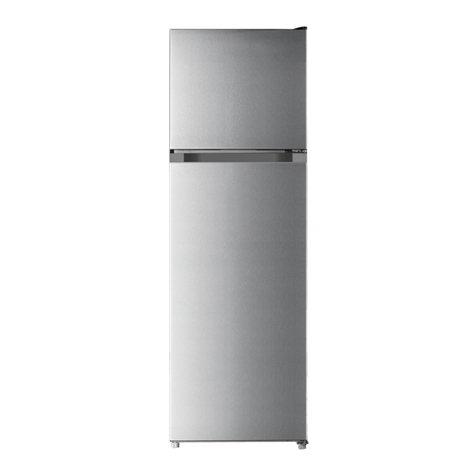
ChiQ
ChiQ CQRT09Y1GD1W User manual

ChiQ
ChiQ CQFU13Y1GD1W User manual

ChiQ
ChiQ CQRT12Y3G2RS User manual

